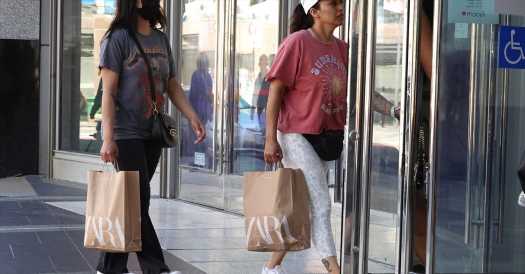Government data on Friday will provide one final update on inflation, spending and wages before the Federal Reserve's interest rate decision next week.
Forecasters expect data from the Labor Department to show that a key measure of wages and salaries increased about 4.6 percent in the first quarter from a year earlier. While that would be a modest slowdown from the end of last year, the growth would be faster than a pace that policymakers consider sustainable, given their concern that quick pay gains could help fuel future inflation.
Commerce Department data, also set for release on Friday, is expected to show that inflation eased somewhat in March but remained uncomfortably high, while consumer spending most likely slumped or may have even fallen.
Investors will scrutinize the data for clues about where the economy is headed, and how the Fed will react. Most observers expect the central bank to raise rates a quarter of a percentage point on Wednesday, continuing an aggressive campaign to bring inflation to heel. But just as important will be what monetary policymakers signal about the path for the rest of 2023 — and that is likely to be shaped by incoming economic data and financial developments.
Fed officials have already lifted rates to nearly 5 percent, and have signaled that they may hit pause after their next increase. Policymakers hope that by raising borrowing costs and keeping them high for some time, they can cool off demand enough to allow price pressures to moderate, without slowing it so much that companies shed workers en masse.
It won’t be an easy task. Data released on Thursday showed that spending and inflation both remained high in the first three months of the year.
Still, recent data have offered some encouraging signs. Consumer spending surged in January but fell in February, and forecasters expect the data on Friday to show that spending was roughly flat in March, suggesting that households might finally be pulling back.
“You’re seeing some of that robustness to start the year really start to reverse a little bit,” said Stephen Juneau, an economist at Bank of America.
Wages, too, have been rising more slowly, at least according to monthly data. Economists will watch for the same trend in the quarterly data on Friday, which they view as more reliable. If it shows up, that could be a sign that the labor market is beginning to cool off even without a big increase in unemployment.
One wild card remains inflation itself. Prices are no longer rising as quickly as they were at their peak last year, but they have come down more slowly and less consistently than many forecasters expected, or than Fed officials would like.
“We knew that inflation was going to be rocky and bumpy,” said Megan Greene, chief economist for the Kroll Institute. “We found peak inflation, but it’s not going to be a smooth path down.”
And regardless of what happens with Friday’s data, the Fed will need to weigh another complication: The banking sector remains in turmoil after a series of high-profile bank failures in March. First Republic has continued to struggle, and its stock plummeted this week. Problems in the industry can slow lending to consumers and businesses, weighing on the economy. That will be an important consideration as monetary policymakers debate their next rate move.
Source: Read Full Article
